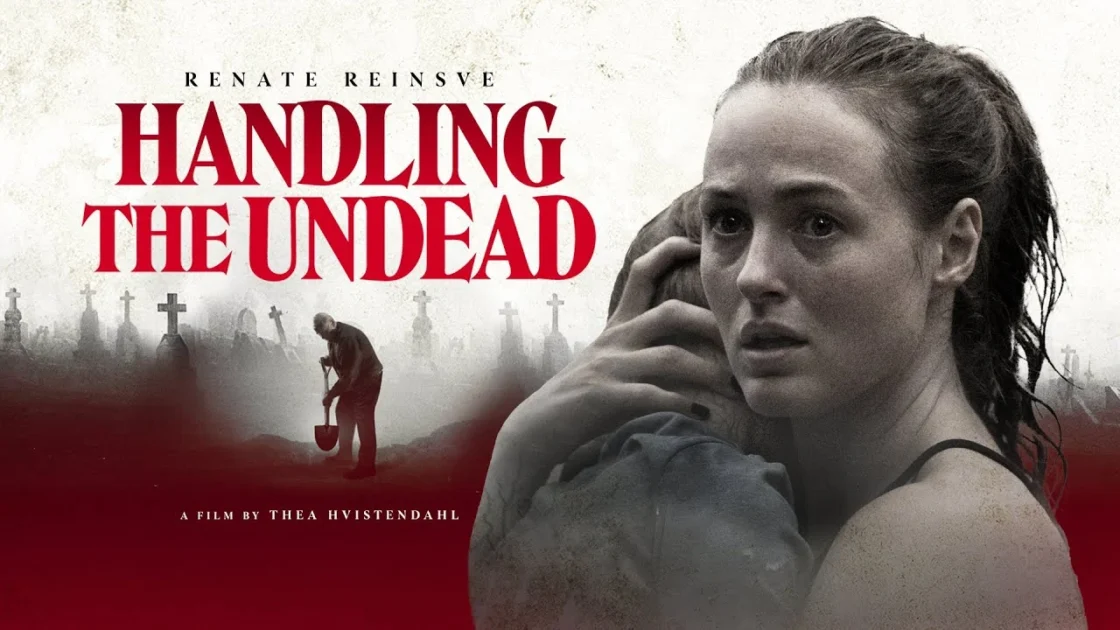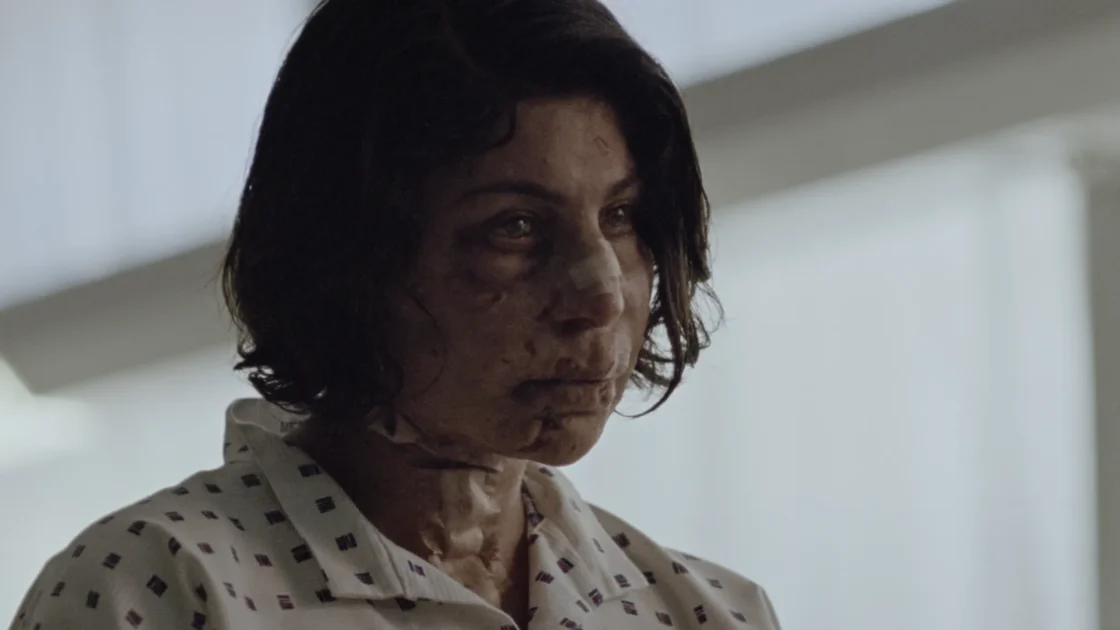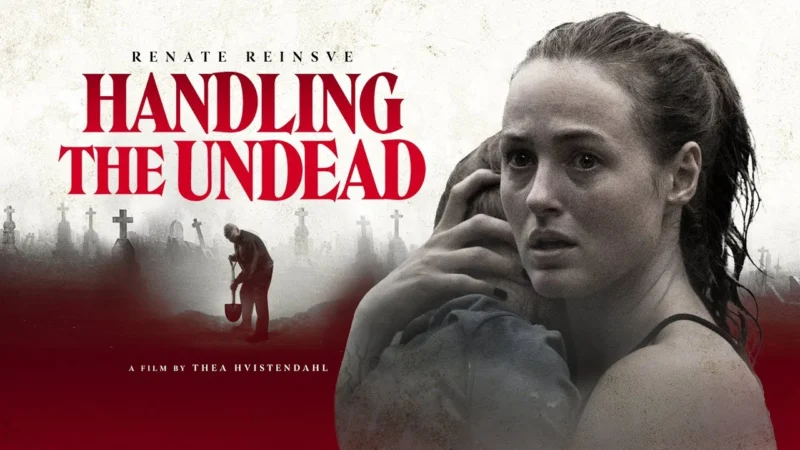Handling the Undead Review – When Love Refuses to Let Go
John Ajvide Lindqvist’s Handling the Undead isn’t zombie horror, it’s grief made manifest, exploring love’s refusal to accept death’s finality.

John Ajvide Lindqvist doesn’t just write horror; he excavates the rotting foundations beneath human connection and forces us to examine what we find there. After the transcendent beauty of Border and the vampire poetry of Let the Right One In, Handling the Undead (Håndtering av udøde) arrives as perhaps his most emotionally devastating work yet. This isn’t zombie horror as we know it; this is grief made manifest, love refusing to release its grip even when it should.
While this review avoids major plot reveals, some scenes and stylistic choices are discussed in detail. Proceed if you’re cool with that.
The film opens with that signature Lindqvist atmosphere, a choir score drifting over domestic spaces, the camera prowling through doorways like it’s afraid to intrude too directly on private pain. We follow an elderly man through Oslo’s muted landscape, carrying breakfast to his daughter in a beautifully composed sequence that establishes the film’s visual language: everything framed through reflections, doorways, corners of rooms. The cinematography becomes complicit in our voyeurism, always slightly removed, always observing grief from a respectful distance.
This review contains discussion of deceased children, grief, and disturbing imagery involving undead family members. The film deals with heavy themes of loss, letting go, and the complex nature of love after death. Proceed with care if these topics are sensitive for you.
What Death Leaves Behind: When the Impossible Becomes Reality | Handling the Undead
What unfolds is deceptively simple. On a sweltering summer day in Oslo, the dead return, not as shambling horrors, but as tragic echoes of themselves, trapped in whatever state death left them. Three families find themselves confronted with the impossible: their loved ones are back, but they’re not really back. They can cry, they can open their eyes, but the essence that made them human has been hollowed out, leaving only the shell of what was.
The genius of Lindqvist’s storytelling lies in how he transforms what could be exploitative into something profound. When the grandfather tenderly carries his dead grandson Elias home, cleaning the decay from his small face with heartbreaking delicacy, we’re witnessing something that transcends horror tropes. This is about the different ways we love, the selfish love that clings, the protective love that shields, the desperate love that would rather live with a shadow than face the emptiness of letting go.
Director Thea Hvistendahl understands the source material’s emotional DNA. Her camera work maintains that crucial distance, using low angles and glimpses rather than confrontational close-ups when dealing with the more disturbing visuals. The dead child imagery is handled with such careful consideration that it becomes poetic rather than exploitative, though it remains deeply unsettling for all the right reasons.

Visual Poetry of Loss: When Grief Colors Everything
The film’s visual palette reinforces its themes beautifully. Muted whites and grays dominate spaces that should be bright, creating an atmosphere where sadness permeates even before tragedy strikes. When the mysterious event occurs, birds flying in formation, car alarms wailing, a sound that brings grown men to their knees, the world literally dims, as if the universe itself is mourning.
Each family represents a different response to impossible love. The grandfather, played with devastating tenderness by Bjørn Sundquist, embodies the caretaker’s dilemma: how do you care for someone who no longer exists in any meaningful way? His scenes with young Elias are doused in restrained horror. Or when his mother tries to get the boy to drink water, the liquid simply pools in his unresponsive mouth.
The hospital scenes with David and his mangled wife push the concept further. Renate Reinsve delivers a scorching performance as a woman trying to process her son’s return while under the weight of her own survival. When she wraps her head in plastic, it’s not just suicidal ideation, it’s the logical endpoint of a mother’s love when faced with the impossible choice between living and joining the half-dead.
Love’s Darkest Form: The Ultimate Sacrifice of Connection
The elderly woman dancing with her deceased lover before swallowing pills represents perhaps the most honest response to the film’s central question: if you could be with someone you love, even if they’re no longer themselves, would you abandon your humanity to do it? Her answer is both romantic and horrifying.
Lindqvist has always been fascinated with Morrissey’s exploration of alienation and connection, and that influence permeates this work. The dead here are the ultimate outsiders, present but absent, loved but lost, human but hollow. They exist in that liminal space Morrissey often occupies in his lyrics, where connection and isolation intertwine until they become indistinguishable.
What makes this adaptation particularly effective is how Hvistendahl and Lindqvist (who co-wrote the screenplay) have distilled the story’s essence while maintaining its emotional complexity. The author has mentioned that this story “ran away with him” when he was writing it, and the film feels like his vision of a more focused version, still sprawling in its emotional scope but tighter in its execution. It feels short, but I think that’s because I wanted more.
When Love Becomes Violence: The Price of Refusing to Let Go
The violence, when it comes, feels inevitable rather than gratuitous. The window-tapping stranger who kills the grandfather, Elias biting his mother as she carries him, the lover consuming her partner’s cheek – these moments land with the weight of tragedy rather than shock value. They’re the natural conclusion of love that refuses to acknowledge death.
The film’s final image, a mother dropping her undead child into the ocean, is both heartbreaking and necessary. It’s the ultimate act of love: letting go not because you don’t care, but because you care too much to let them exist in this half-state forever.
Handling the Undead succeeds where many horror films fail because it understands that the real terror isn’t in death itself, but in love’s refusal to accept death’s finality. It’s about the different types of love we carry, the possessive love that would rather keep a shadow than face emptiness. The protective love that shields others from painful truths, and ultimately, the sacrificial love that can release what it treasures most.
This is Lindqvist at his most emotionally raw, supported by Hvistendahl’s direction and uniformly excellent performances. It’s a film that stays with you not because of its scares, but because of its fundamental understanding of human nature. Sometimes the most horrifying thing isn’t a monster, it’s the realization that love itself can become monstrous when it refuses to let go.
The Bottom Line
This Norwegian horror mystery film transforms what could have been standard zombie fare into something far more haunting, a meditation on grief, love, and the terrible beauty of letting go. Hvistendahl’s direction paired with Lindqvist’s emotionally intelligent screenplay creates cinema that burrows under your skin and stays there long after the credits roll.
Handling the Undead is rated
4.5 love refuses to die gracefully out of 5
Handling the Undead is Streaming – Find What You Want to Watch on Justwatch.com
Film Details
- Original Title: Håndtering av udøde (Handling the Undead (English)
- Director: Thea Hvistendahl
- Writers: Thea Hvistendahl, John Ajvide Lindqvist
- Stars: Bjørn Sundquist, Renate Reinsve, Dennis Østby Ruud
- Based on: Novel by John Ajvide Lindqvist

Production Companies
Anonymous Content Nordic
Einar Film
Film i Väst (in co-production with)
Filmiki Etairia
Nordisk Film (co-production)
Oslo Filmfond (co-production)
Zentropa International Sweden
Håndtering av udøde | Handling the Undead

Director: Thea Hvistendahl
Date Created: 2024-02-09 17:22
4.5
